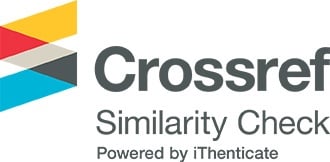Improving productivity of production line using lean manufacturing
Các tác giả
DOI: https://doi.org/10.59294/HIUJS2025030Từ khóa:
Lean manufacturing, 3M, DMAIC, NVA analysisTóm tắt
Reducing waste, cutting production costs, and raising productivity are the most important objectives for fast-moving consumer goods manufacturing to maintain competitiveness in the global market and aim for stable and long-term development. Lean manufacturing is a set of tools, processes, and concepts for implementing continuous improvement and eliminating operations that do not bring value to the business. This study emphasizes defining and evaluating overburden, monitoring process efficiency, and formulating improvement plans using the DMAIC framework in terms of lean implementation. Lean techniques such as 3M (Muda, Muri, Mura), and NVA (non-value-added) analysis are used to eliminate waste, reduce cost, and increase line productivity. After applying Lean Manufacturing with the suggested DMAIC framework, the packing system automation will replace the current system. The advantages of this innovation will increase the productivity of the production line. In addition, it can also improve industrial safety and ergonomic work conditions for workers and reduce labor.
Abstract
Reducing waste, cutting production costs, and raising productivity are the most important objectives for fast-moving consumer goods manufacturing to maintain competitiveness in the global market and aim for stable and long-term development. Lean manufacturing is a set of tools, processes, and concepts for implementing continuous improvement and eliminating operations that do not bring value to the business. This study emphasizes defining and evaluating overburden, monitoring process efficiency, and formulating improvement plans using the DMAIC framework in terms of lean implementation. Lean techniques such as 3M (Muda, Muri, Mura), and NVA (non-value-added) analysis are used to eliminate waste, reduce cost, and increase line productivity. After applying Lean Manufacturing with the suggested DMAIC framework, the packing system automation will replace the current system. The advantages of this innovation will increase the productivity of the production line. In addition, it can also improve industrial safety and ergonomic work conditions for workers and reduce labor.
Tài liệu tham khảo
[1] M. Pieńkowski, “Waste measurement techniques for lean companies,” International Journal of Lean Thinking, vol. 5, no. 1, pp. 9-24, 2014.
[2] M. A. Lewis, “Lean production and sustainable competitive advantage,” International Journal of Operations & Production Management, vol. 20, no. 8, pp. 959-978, Aug. 2000, doi: 10.1108/01443570010332971.
DOI: https://doi.org/10.1108/01443570010332971[3] R. Sundar, A. N. Balaji, and R. M. S. Kumar, “A Review on Lean Manufacturing Implementation Techniques,” Procedia Eng, vol. 97, pp. 1875-1885, 2014, doi: 10.1016/j.proeng.2014.12.341.
DOI: https://doi.org/10.1016/j.proeng.2014.12.341[4] R. Shah and P. T. Ward, “Defining and developing measures of lean production,” Journal of Operations Management, vol. 25, no. 4, pp. 785-805, Jun. 2007, doi: 10.1016/j.jom.2007.01.019.
DOI: https://doi.org/10.1016/j.jom.2007.01.019[5] R. Shah and P. T. Ward, “Lean manufacturing: context, practice bundles, and performance,” Journal of Operations Management, vol. 21, no. 2, pp. 129-149, Mar. 2003, doi: 10.1016/S0272-6963(02)00108-0.
DOI: https://doi.org/10.1016/S0272-6963(02)00108-0[6] M. Rother and J. Shook, Learning to see: value stream mapping to add value and eliminate muda. Lean enterprise institute, 2003.
[7] F. A. Abdulmalek and J. Rajgopal, “Analyzing the benefits of lean manufacturing and value stream mapping via simulation: A process sector case study,” Int J Prod Econ, vol. 107, no. 1, pp. 223-236, May 2007, doi: 10.1016/j.ijpe.2006.09.009.
DOI: https://doi.org/10.1016/j.ijpe.2006.09.009[8] U. K. Teichgräber and M. de Bucourt, “Applying value stream mapping techniques to eliminate non-value-added waste for the procurement of endovascular stents,” Eur J Radiol, vol. 81, no. 1, pp. e47-e52, Jan. 2012, doi: 10.1016/j.ejrad.2010.12.045.
DOI: https://doi.org/10.1016/j.ejrad.2010.12.045[9] D. Klimecka-Tatar, “Value Stream Mapping as Lean Production tool to improve the production process organization - case study in packaging manufacturing,” Production Engineering Archives, vol. 17, no. 17, pp. 40-44, Dec. 2017, doi: 10.30657/pea.2017.17.09.
DOI: https://doi.org/10.30657/pea.2017.17.09[10] A. R. Rahani and M. al-Ashraf, “Production Flow Analysis through Value Stream Mapping: A Lean Manufacturing Process Case Study,” Procedia Eng, vol. 41, pp. 1727-1734, 2012, doi: 10.1016/j.proeng.2012.07.375.
DOI: https://doi.org/10.1016/j.proeng.2012.07.375[11] R. S. Mor, A. Bhardwaj, S. Singh, and A. Sachdeva, “Productivity gains through standardization-of-work in a manufacturing company,” Journal of Manufacturing Technology Management, vol. 30, no. 6, pp. 899-919, Oct. 2019, doi: 10.1108/JMTM-07-2017-0151.
DOI: https://doi.org/10.1108/JMTM-07-2017-0151[12] C. C. Pegels, “The Toyota Production System - Lessons for American Management,” International Journal of Operations & Production Management, vol. 4, no. 1, pp. 3-11, Jan. 1984, doi: 10.1108/eb054703.
DOI: https://doi.org/10.1108/eb054703[13] D. Romero, P. Gaiardelli, M. Thürer, D. Powell, and T. Wuest, “Cyber-Physical Waste Identification and Elimination Strategies in the Digital Lean Manufacturing World,” 2019, pp. 37-45. doi: 10.1007/978-3-030-30000-5_5.
DOI: https://doi.org/10.1007/978-3-030-30000-5_5[14] P. Arezes, D. Carvalho, and A. C. Alves, “Threats and opportunities for workplace ergonomics in lean environments,” EurOMA, 2010.
[15] T. Melo, A. C. Alves, I. Lopes, and A. Colim, “Reducing 3M by Improved Layouts and Ergonomic Intervention in a Lean Journey in a Cork Company,” 2020, pp. 537-545. doi: 10.1007/978-3-030-41486-3_58.
DOI: https://doi.org/10.1007/978-3-030-41486-3_58[16] J. de Mast and J. Lokkerbol, “An analysis of the Six Sigma DMAIC method from the perspective of problem solving,” Int J Prod Econ, vol. 139, no. 2, pp. 604-614, Oct. 2012, doi: 10.1016/j.ijpe.2012.05.035.
DOI: https://doi.org/10.1016/j.ijpe.2012.05.035[17] A. P. Chaple, B. E. Narkhede, M. M. Akarte, and R. Raut, “Modeling the lean barriers for successful lean implementation: TISM approach,” International Journal of Lean Six Sigma, vol. 12, no. 1, pp. 98-119, Feb. 2021, doi: 10.1108/IJLSS-10-2016-0063.
DOI: https://doi.org/10.1108/IJLSS-10-2016-0063[18] N. R. Sangwa and K. S. Sangwan, “Continuous Kaizen Implementation to Improve Leanness: A Case Study of Indian Automotive Assembly Line,” 2020, pp. 51-69. doi: 10.1007/978-3-030-44248-4_6.
DOI: https://doi.org/10.1007/978-3-030-44248-4_6Tải xuống
Tải xuống: 67











